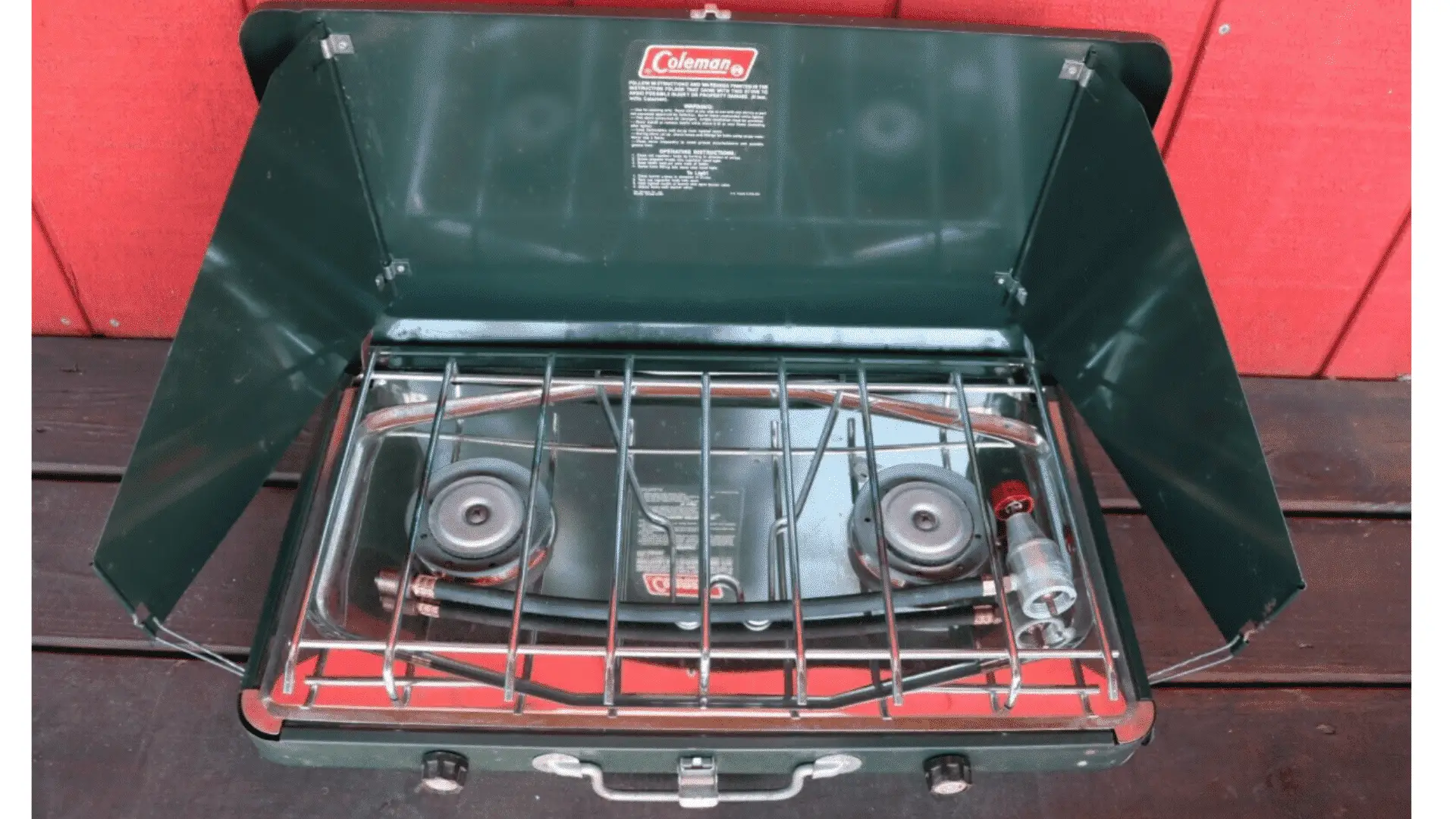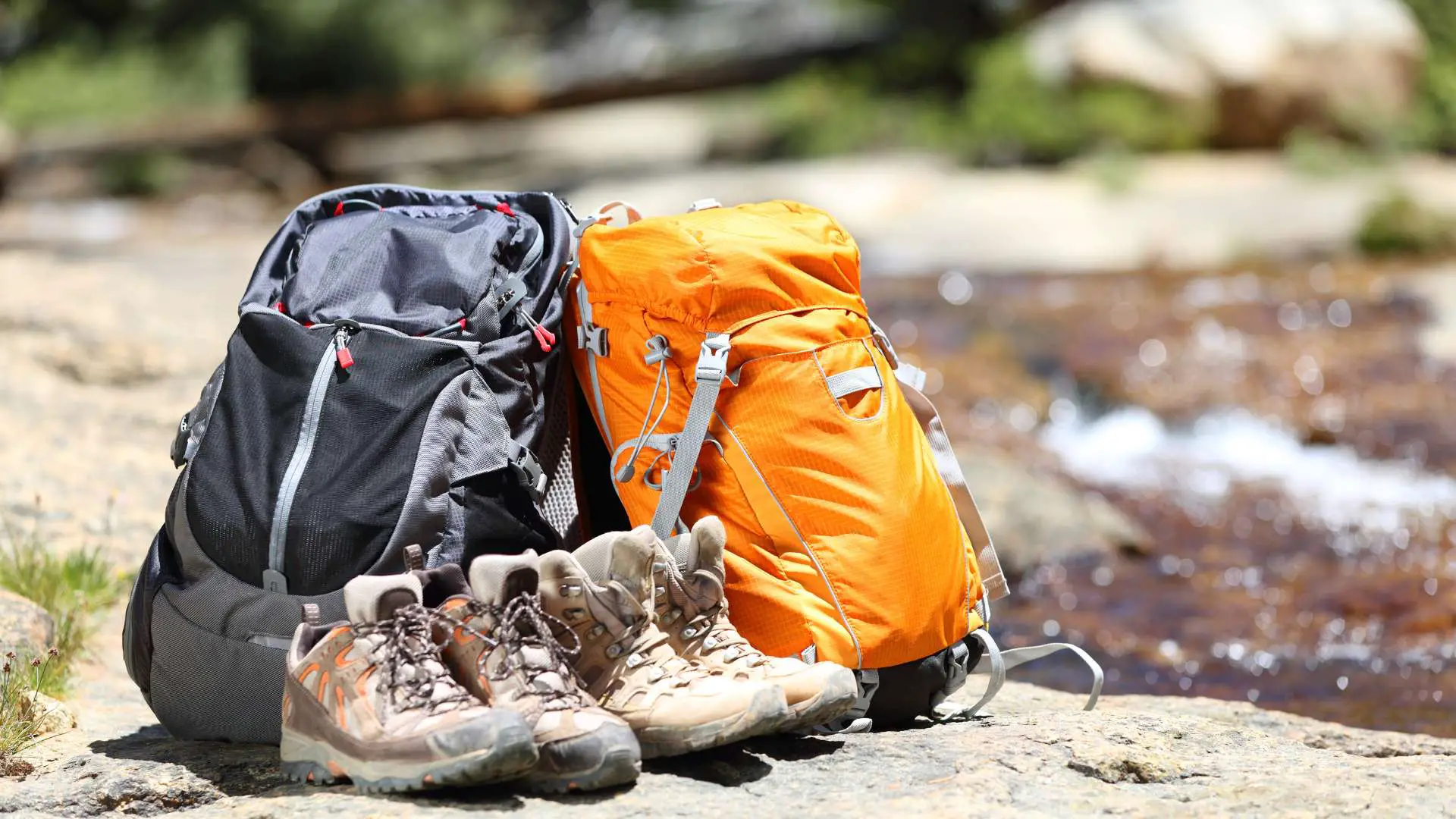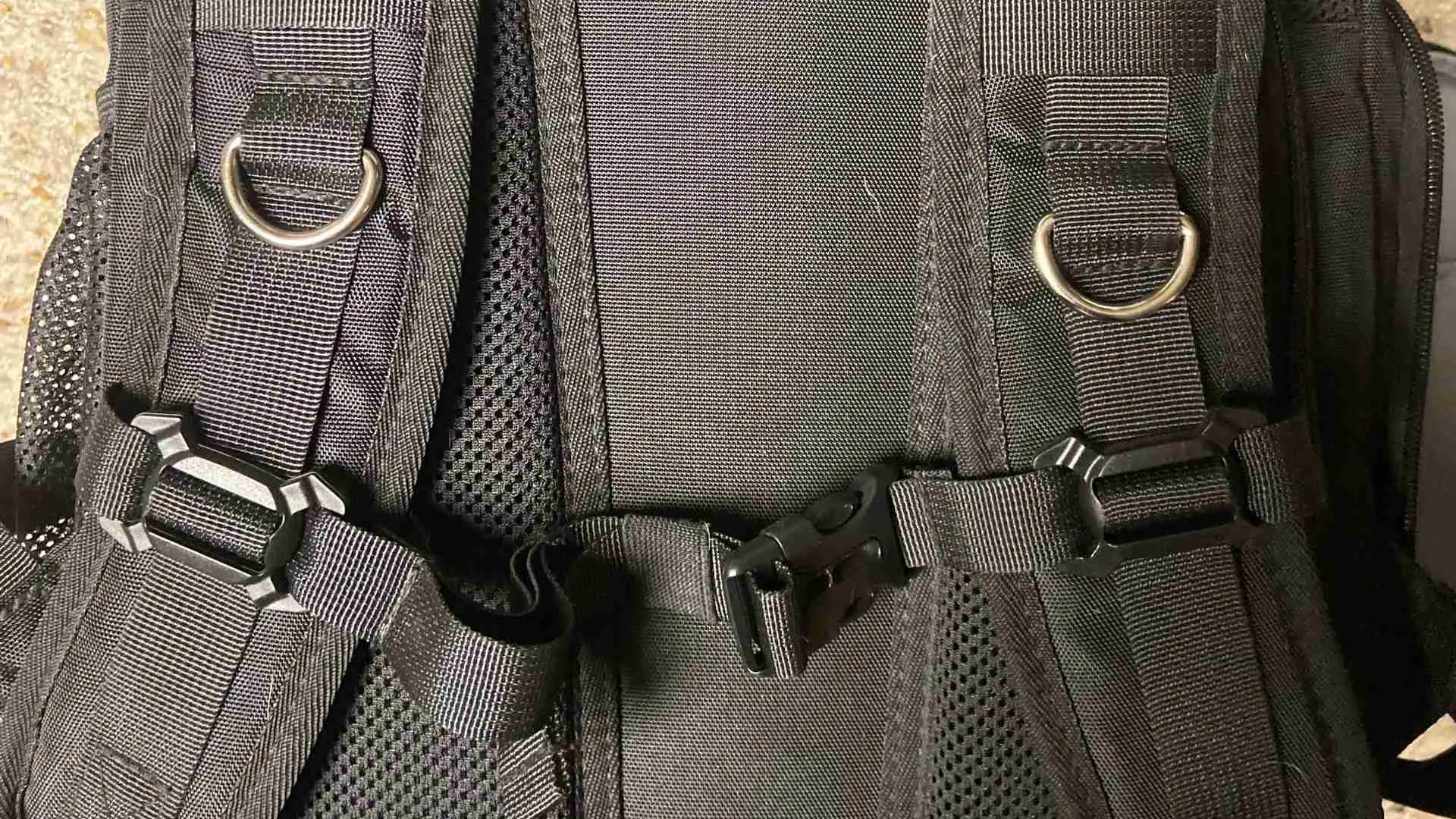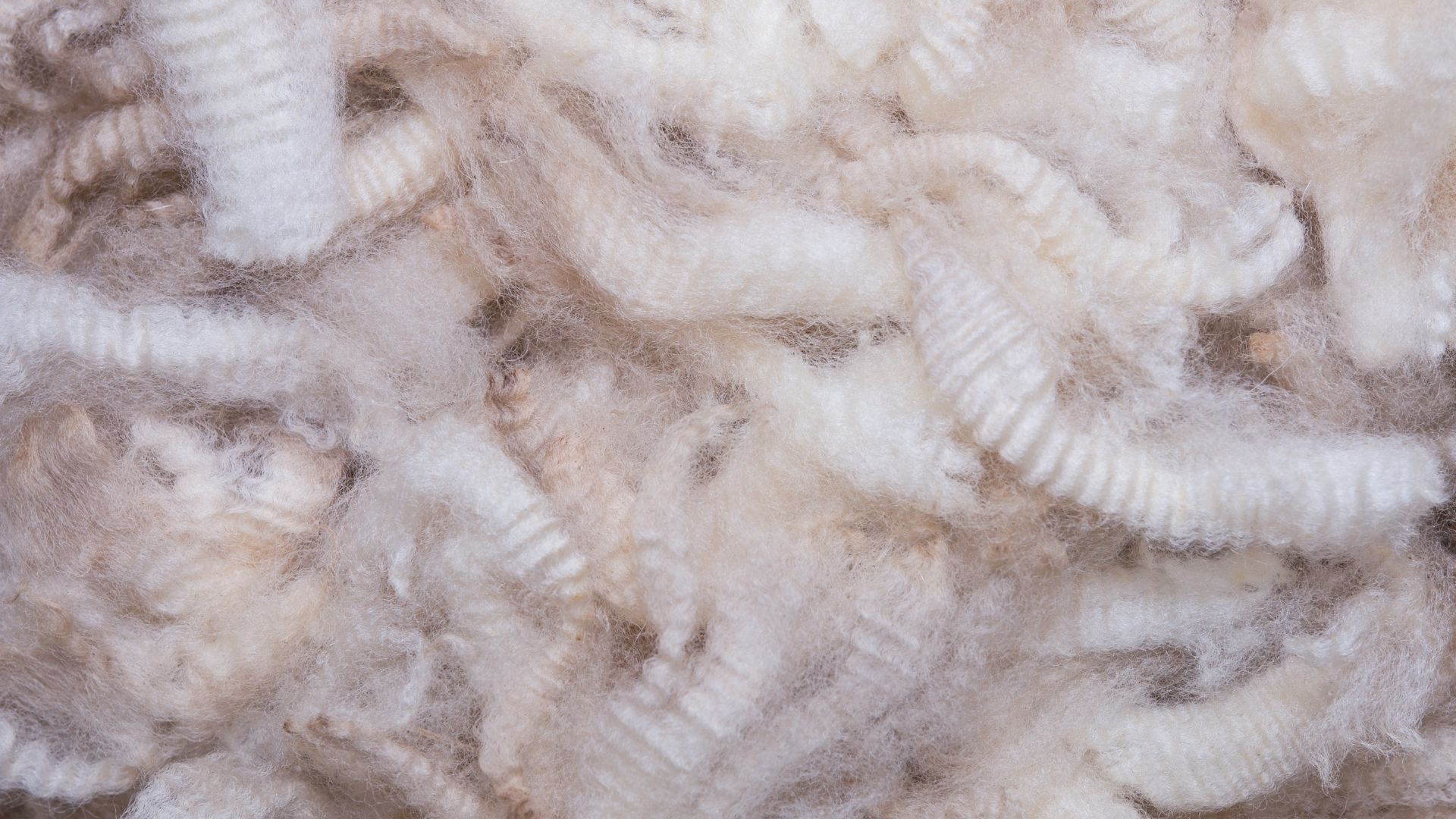A camp stove can really tear through those tiny green 1lb propane tanks. I’ve burned through more portable propane tanks than I can count. Wouldn’t it be nice to use a full sized propane tank with your camping stove? You would save a lot of money and not have to swap out tanks when you’re cooking for a large group. Hooking up a regular propane tank to your camp stove is easy since all you need is a cheap adapter hose that shouldn’t cost more than $20.
How do you connect a camp stove to a large propane tank? Camping stoves are designed to directly attach to portable propane tanks, but you can easily hook up a large propane tank using a high pressure hose and adapter. Buy a high pressure hose with a male connector (like the mini tank) to screw into your stove on one end and a Type-1 female connector to attach to the tank on the other end. Just make sure the hose has a high pressure rating so it’s safe to connect to a full sized tank.
You’ll be surprised how simple it is setup your camping stove with a large propane tank. All you need to do is screw a $20-25 adapter hose onto your stove and attach it to your regular propane tank. It takes less than a minute once you’ve picked up your adapter hose. So what do I need to run my camping stove off a regular propane tank?
Table Of Contents
Can You Connect A Camp Stove To a Big Propane Tank?

As I mentioned above, hooking up a large propane tank to your camping stove is fairly easy. All you need is a high pressure propane hose that has a 1 lb to 20lb adapter on each end. You can get a 1lb to 20lb hose with an adaptor on each end at most home improvement stores (Home Depot, Lowes, etc.).
I highly recommend the stainless steel GasOne 1lb to 20lb adapter (On Amazon). You can save a few dollars by purchasing the rubber version, but it’s like a 1-2 dollar difference and I prefer the stainless look. That’s the same adaptor hose they sell at Home Depot and Lowes. It has high quality connections and shouldn’t leak like some of the cheaper Chinese No-Brand options you see on Amazon.
Personally, I think the 5ft hose is the perfect length for a camping stove. It’s long enough to reach down from a table or from the tailgate of my truck, and short enough that it doesn’t get in the way. A longer 8-12 foot hose won’t hurt, but they’re more expensive and can get in the way.
I had a 12 ft hose that I bought for my handheld weed burner that I would use with my stove, but somebody always seemed to trip on it. It would wrap around my legs or get caught up on the dog and the stove would come tumbling down. Switching over to a shorter 5ft hose solved that problem instantly.
How To Hookup A Large Propane Tank To A Camping Stove?

Hooking up a propane tank to your camping stove is a fairly straightforward process. Just make sure your camping stove has an internal regulator since some of the compact backpacking stoves don’t use them. You can always add a regulator, but you probably wouldn’t want to use a 20lb tank with a backpacking stove anyway. So how do you hook up the tank?
- Place the camp stove on a level surface where you plan to do your cooking. A trucks tailgate, folding table, or picnic table is the perfect height. Just make sure there’s enough room for the hose to reach your propane tank.
- Open up your camp stove to get it ready and turn all the dials to the off position. You don’t want to accidentally leak out propane, because the knobs were turned open.
- Remove the old 1lb propane tank from your grill. Don’t throw it away, because you can always refill the tank with a full sized tank and propane refill adapter.
- Make sure the propane tank is completely shut off and take off any caps that would make it hard to light the pilot light.
- Start by screwing the male end of your 1lb to 20lb adapter to the camping stove. Once that’s done you can connect the female end to the propane tank. The male end doesn’t rotate so that’s why you need to install it into the stove first. You would have to spin around your propane tank a bunch of times to unwind the twisting hose if you put the female end on first.
- Open up the propane tank and slowly pressurize the camp stove. Try to listen and smell for a propane leak. If there’s a leak, shut off the tank, and start checking to make sure the temperature knobs are closed on the stove. From there, you should tighten the hose adapter and check to make sure the gaskets are intact.
- At this point, it’s time to light the burners. Some stoves have a push button igniter, but you may need to use matches or a lighter. Open up the temperature knobs to low to release propane and use the igniter or lighter/matches to light the burner. You should see flames and be able to use the stove.
- Once you’re done cooking, make sure you remember to shut off the propane tank. This depressurizes the stove and increases the lifespan of the internal regulator. It’s not entirely necessary if you’re going to keep the tank hooked up to the stove, but it’s a good habit to get into.
What Else Do I Need To Hook My Camping Stove Up To A Large Tank?
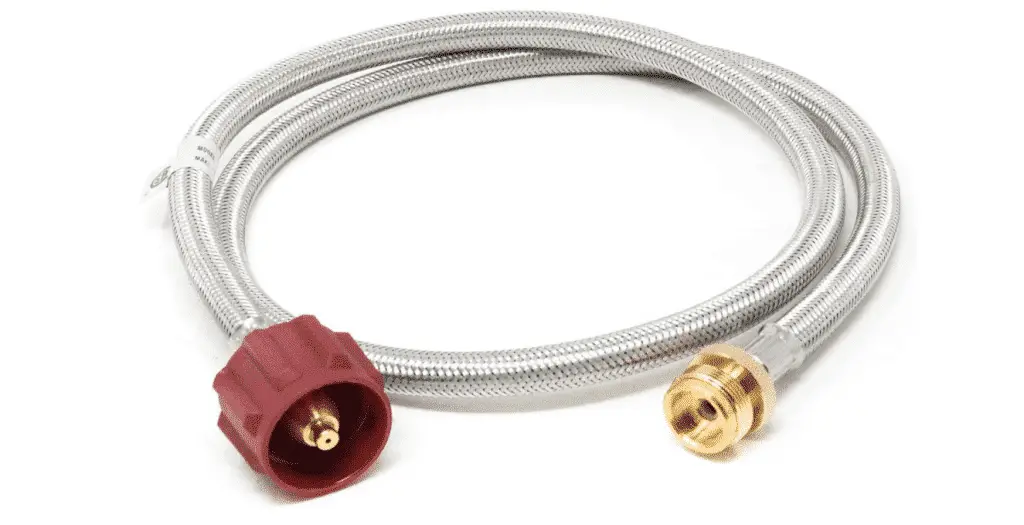
You really shouldn’t need anything else except for the hose adapter. Regulators are usually unnecessary since they’re almost always built into the stove, and everything else you need like O-Rings should be included with the adapter. Some of the compact propane backpacking stoves (MSR Pocket Rocket) don’t use regulators, but I can’t imagine a time when you’d need to use a full sized propane tank with a backpacking stove.
Some people argue that a high pressure 20lb tank will eventually damage the internal low pressure regulator on a camping stove, but I don’t know anybody that’s had that problem. I even decided to reach out to Coleman, Camp Chef, Gas One, and a few of the other companies that make portable camping stoves.
They all said a variation of this statement ” A 1lb tank is a low pressure cylinder and 20lb tank is high pressure, but the margin falls within the internal regulators safety limits”. So you shouldn’t have any problems using a 20lb tank or smaller with you camping stove. Larger 30lb or 40lb tanks use higher pressures and might damage the internal regulator over time, but it shouldn’t be an issue with occasional use.
Mini propane tanks and regular sized 15lb or 20lb propane tank both use male threads to connect to appliances, but they have different sized threads. So you need to get a high pressure propane hose with an adapter to convert from the larger propane tank threads to the smaller threads on your camping stove.
Obviously you also need a propane tank, camping stove and some type of igniter (usually built in), but you should be able to hook it up to your stove with just the adapter hose. I wouldn’t bother with the cheap Chinese hoses you see on Amazon. Go with a quality hose like the GasOne Adapter and you shouldn’t have any problems.
I’ve been using my GasOne hose adapter for years and haven’t had any leaks. It still looks and performs like the day I bought it from Home Depot. I use it in the summer with my stove and it goes on my camping heater (mr heater) in the winter. It’s really cut down on the cost of buying new 1lb tanks.
Do I Need A Regulator For My Stove?

Some of the hose adapters have regulators built into the hose. They won’t hurt anything, but they’re really not necessary with a camping stove with a regular 15-20lb tank. Think about it for a minute. Does a 1lb propane tank have a regulator when you screw it directly onto the stove? No it just screws on and works.
All propane appliances need regulators, but almost everything that’s designed to run off of a 1lb propane tanks has a regulator already built into the unit. That’s usually the part that’s affixed to the stove that you screw the 1lb propane tank or hose adaptor into. So you shouldn’t need to buy a separate regulator for a camping stove.
The only time you may need a new regulator is if the internal regulator broke on the stove or you’re using an oversized tank. Most of the adapters are only rated to be used with a 20lb propane tank since that’s a fairly low pressure system. Going with a larger 30 or 40lb tank will increase the pressure and may cause your stoves internal regulator to quit working properly.
I doubt it would happen instantly, but you don’t want to put unnecessary stress on the stove. They’re designed to be used with 1lb propane tanks, and can handle the additional pressure of a 20lb tank, but I wouldn’t go larger than that. Spending the extra $5-10 on a regulator will lower the pressure so you won’t run into problems.
Does iO Do you really need to use a massive propane tank with a camping stove? Do you really need to use a massive propane tank with a camping stove?
What Size Tank Should I Use? Can I Use Any Size Propane Tank?
There are many different sized propane tanks to choose from ranging from tiny 1lb tanks to massive 500+ gallon tanks that you would use to heat a home. Technically you can hook up any of those tanks to your stove, but you’re asking for problems.
Go with a standard 15lb or 20lb propane tank so you don’t have to worry about pressure issues. You can use a separate pressure regulator to use a larger tank, but there’s a certain point where carrying around a massive tank will get annoying.
Do you really need to use a massive propane tank with a camping stove? I definitely don’t! Let’s do the math for a minute. My Coleman camping stove burns through 1 pint of propane per hour (8 pints per gallon), and there’s 4.6 gallons of propane in a 20lb tank.
So you could run your stove continuously with all the burners turned up to high for almost 37 hours without running out of propane. Turning one of the burners off or lowering the temperature would extend it out a few more days. That’s more than enough to get through a tailgate party, BBQ, or multiweek camping trip. I can’t think of a time when I’ve had to run a grill for more than 1-2 hours at a time.
Plus a 20lb tank weighs almost 40lbs when it’s full. I wouldn’t even think about lugging around a 30lb or 40lb tank and using it with a portable stove. That might work with a permanent setup, but carrying around 50-70 lbs doesn’t sound appealing and you’d also need to use a separate regulator.
Is There A Difference Between Hooking Up A 1lb and 20lb Tank?
There shouldn’t be a huge difference between hooking up a 1lb tank and 20lb tank. The hose adapter solves all the hookup problems and the internal regulator can handle the pressure of a 20lb tank. Instead of screwing on the 1lb tank, you need to run the male end of your hose to the stove, and connect the female end to your 20lb tank.
Just remember that you need to turn on your propane tank at the beginning and turn it off when you’re done cooking. You don’t want to have the constant pressure on the internal regulator. You can adjust the flow rate a bit by adjusting the knob on the top of your tank and fine tune the adjustment with the burner knobs.
Detaching the tank isn’t any different than with a portable tank. Just shut off the tank and unscrew it from the hose. There’s no way to depressurize the lines so a little bit of propane may stay in the hose. You can burn it off in the stove’s burner or let it leak out naturally.
A Few Other Related Questions
1) How Long Will A 20lb Propane Tank Last In A Camping Stove?
A 20lb propane tank holds approximately 4.6 gallons of propane and there are 8 pints in a gallon. Stoves burn through 1/2 pint of propane per hour on a single burner set to high. So a double burner camping stove like most people use burns through 1 pint of propane per hour at max settings. You should get about 37 hours of cook time with a double burner or 74 hours with a single burner.
Just remember that the 20lb tank is running through a low pressure regulator on your camping stove. You won’t get close to those times running a regular grill or full sized stove with a high pressure regulator off a 20lb tank.
2) How Long Will A 1lb Tank Last In A Camping Stove?
Disposable 1lb tanks hold 2 pints of propane so it’s easy to do the math. Most stoves go through approximately 1/2 pint of propane per burner each hour on high. So a 1 burner stove will last 4 hours on high and a 2 burner stove will last 2 hours on high.
Keep in mind, that I’m giving a minimum estimate since it’s calculated with the burners set on high. You can extend the time by turning off a burner or lowering the temperature setting.
3) Can I Use a 20lb Propane Tank To Refill My Disposable Tanks?
Yes, you can refill disposable 1lb tanks with a regular sized 20lb tank. You just need to buy a refill adapter to hook up to the tank. Screw the refill adapter onto your 20lb tank. Install the disposable 1lb tank on the end of the refill adapter and open up the valve on your full sized tank.
The refill adapter has a cut off valve so it will automatically shut off when your disposable tanks full. After a minute or 2, shut off your tank and remove the adapter and 1lb bottle. You should be good to go!
4) Does It Matter That My Stove Has A Low Pressure Regulator?
Regular sized propane tanks are high pressure, but it shouldn’t matter that your stove has a low pressure regulator. The regulator is designed to be able to handle higher pressures than you find in a 1lb tank. It may cause the regulator to fail prematurely with long term use, but you can replace the regulator for less than $10 or add a cheap $5 regulator to the tank to fix the issue.
5) What About Using Larger 30lb or 40lb Tanks?
Most camping stoves are designed to be able to withstand the pressure found in a 20lb tank. Larger 30 or 40lb tanks are set at a higher pressure so they’re outside the safety rating of a low pressure regulator. You can probably use a larger tank occasionally, but I wouldn’t push my luck with regular use.
